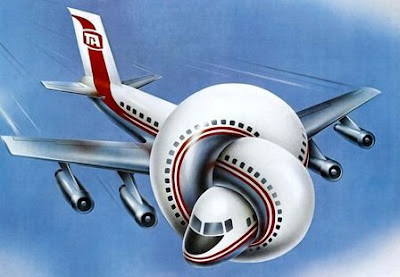Lida Moser opens this Friday
Opening on March 14, 2007 and through April 5, 2007, the Fraser Gallery in Bethesda will be hosting their second solo exhibition of legendary American photographer Lida Moser, who now lives in retirement in nearby Rockville, Maryland.
This almost 90-year-old photographer is not only one of the most respected American photographers of the 20th century, but also a pioneer in the field of photojournalism. Her photography has been in the middle of a revival and rediscovery of vintage photojournalism, and has sold as high as $4,000 at Christie's auctions and continues to be collected by both museums and private collectors worldwide. In a career spanning over 60 years, Moser has produced a body of works consisting of thousands of photographs and photographic assemblages that defy categorization and genre or label assignment.
Additionally, Canadian television recently finished filming a documentary about her life; the second in the last few years, and Moser’s work is now in the collection of many museums worldwide.
She was once called the "grandmother of American street photography" by an art critic, which prompted a quick rebuttal by Moser, who called the writer's editor and told him that she wasn't the "fucking grandmother of anything or anyone, and would he [the writer] ever describe Ansel Adams or any other male photographer as the 'grandfather' of any style."
Tough New Yorker.
I once sold one of her rare figure studies to a big famous photography collector from the West Coast (who collects mostly nude photography). There were four or five prints of the image, taken and printed around 1961, but one had all the markings and touch-up evidence of the actual photo that had been used by the magazine, and thus I sent him that one.
He called me to complain that although he loved Moser's work, that he wasn't too happy with the retouching, and could I ask Lida for one of the untouched photos.
Now, you gotta understand that these images were taken and touched-up by hand for publication in a newspaper or magazine (since they were nudies, the latter probably). They were not touched up for a gallery or an art show - they were "battlefield" prints of a working photographer.
I called Lida and explained the situation over the phone. "Sweetie," she said to me in her strong New York accent, "you call that guy right back and tell him that you talked to Lida Moser and that Lida Moser told you to tell him: Fuck You!"
I didn't do that, but just sent him an untouched vintage print.
Tough New Yorker.
Lida was a well-known figure in the New York art scene of the 1950s, 1960s, and 1970s, and a portrait of Lida Moser by American painter Alice Neel hangs in the permanent collection of the Metropolitan Museum in New York City. Neel painted a total of four Moser portraits over her lifetime, and one of them was included in the National Museum of Women in the Arts' "Alice Neel's Women" exhibition.
"Charles Mingus in his Apartment in New York City", c. 1965.
Among her body of works there are also loads of photographs of well-known artists and musicians that either hung around Lida's apartment in NYC or who were part of her circle of friends.
Lida Moser's photographic career started as a student and studio assistant in 1947 in Berenice Abbott's studio in New York City, where she became an active member of the New York Photo League. She then worked for Vogue, Harper's Bazaar, Look and many other magazines throughout the next few decades, and traveled extensively throughout the United States, Canada and Europe.
In 1950 Vogue, and (and subsequently Look magazine) assigned Lida Moser to carry out an illustrated report on Canada, from one ocean to another. When she arrived at the Windsor station in Montreal, in June of that same year, she met by chance, Paul Gouin, then a Cultural Advisor to Duplessis government. This chance meeting led Moser to change her all-Canada assignment for one centered around Quebec.
Armed with her camera and guided by the research done by the Abbot Felix-Antoine Savard, the folklorist Luc Lacourcière and accompanied by Paul Gouin, Lida Moser then discovers and photographs a traditional Quebec, which was still little touched by modern civilization and the coming urbanization of the region.
Decades later, a major exhibition of those photographs at the McCord Museum of Canadian History became the museum’s most popular exhibit ever.
Her work has been exhibited in many museums worldwide and is in the permanent collection of the National Portrait Gallery, London, the National Archives, Ottawa, the National Galleries of Scotland, National Portrait Gallery, Washington, DC, the Library of Congress, Les Archives Nationales du Quebec, Corcoran Gallery, Phillips Collection and many others.
Moser was an active member of the Photo League and the New York School.
The Photo League was the seminal birth of American documentary photography. It was a group that was at times at school, an association and even a social club. Disbanded in 1951, the League promoted photojournalism with an aesthetic consciousness that reaches street photography to this day.
"New York City, Office Building Lobby" c. 1965
An opening reception for Ms. Moser will be held on Friday, March 14, 2007 from 6-9PM as part of the Bethesda Art Walk. The reception is free and open to the public.
If you are a photographer, do not miss this opportunity to meet one of the women who set the path for all of you. If you just love the arts, Moser is also a walking encyclopedia of anecdotes and stories about the New York art world of the 50s, 60s and 70s.
Read the WaPo review of her last exhibition here.





